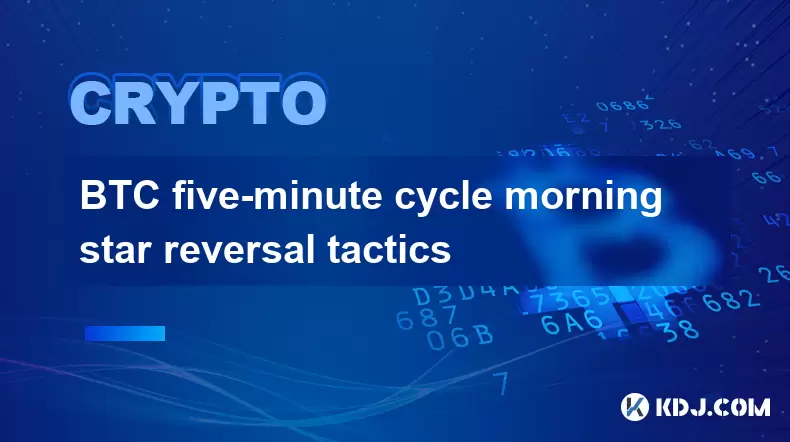-
 Bitcoin
Bitcoin $115100
1.27% -
 Ethereum
Ethereum $3675
2.71% -
 XRP
XRP $2.995
1.45% -
 Tether USDt
Tether USDt $1.000
0.02% -
 BNB
BNB $769.8
2.64% -
 Solana
Solana $168.0
3.25% -
 USDC
USDC $0.9999
-0.01% -
 TRON
TRON $0.3371
1.48% -
 Dogecoin
Dogecoin $0.2051
3.36% -
 Cardano
Cardano $0.7394
2.30% -
 Hyperliquid
Hyperliquid $38.15
0.42% -
 Stellar
Stellar $0.3966
-0.36% -
 Sui
Sui $3.486
2.93% -
 Chainlink
Chainlink $16.72
2.52% -
 Bitcoin Cash
Bitcoin Cash $568.0
4.36% -
 Hedera
Hedera $0.2440
2.59% -
 Ethena USDe
Ethena USDe $1.001
0.04% -
 Avalanche
Avalanche $22.16
2.06% -
 Litecoin
Litecoin $119.1
-0.73% -
 UNUS SED LEO
UNUS SED LEO $8.991
0.04% -
 Toncoin
Toncoin $3.232
-0.39% -
 Shiba Inu
Shiba Inu $0.00001233
2.82% -
 Uniswap
Uniswap $9.717
2.53% -
 Polkadot
Polkadot $3.664
1.85% -
 Dai
Dai $1.000
0.01% -
 Monero
Monero $281.2
-3.89% -
 Bitget Token
Bitget Token $4.350
1.55% -
 Cronos
Cronos $0.1428
5.07% -
 Pepe
Pepe $0.00001050
3.68% -
 Aave
Aave $262.3
3.54%
BTC five-minute cycle morning star reversal tactics
The BTC five-minute cycle morning star reversal is a key pattern for predicting bullish trends in Bitcoin, enhancing short-term trading strategies.
Jun 05, 2025 at 06:07 pm

Introduction to the BTC Five-Minute Cycle Morning Star Reversal
The BTC five-minute cycle morning star reversal is a popular technical analysis pattern used by traders to predict potential bullish reversals in the Bitcoin market. This pattern is particularly effective in the short-term trading of Bitcoin, given its volatile nature. Understanding how to identify and trade this pattern can significantly enhance a trader's ability to capitalize on quick price movements. In this article, we will delve into the specifics of the morning star pattern, how it applies to the five-minute cycle of Bitcoin, and the tactics to effectively trade this reversal.
Understanding the Morning Star Pattern
The morning star pattern is a three-candle formation that signals a potential bullish reversal in a downtrend. It consists of:
- First candle: A long bearish candle, indicating strong selling pressure.
- Second candle: A small-bodied candle that gaps down from the first candle, showing indecision in the market.
- Third candle: A long bullish candle that gaps up from the second candle, suggesting a shift in momentum to the bulls.
In the context of Bitcoin trading, this pattern can be particularly useful in the five-minute cycle, where price movements can be swift and pronounced.
Identifying the Morning Star in the Five-Minute BTC Cycle
To identify the morning star pattern in the five-minute BTC cycle, traders need to pay close attention to the candlestick formations within this timeframe. Here’s how to spot it:
- Look for a downtrend: Ensure the Bitcoin price is in a clear downtrend before the pattern begins.
- Spot the bearish candle: The first candle should be a long bearish candle, confirming the ongoing downtrend.
- Identify the small candle: The second candle should be small and gap down from the first candle, signaling a potential shift in momentum.
- Confirm with the bullish candle: The third candle should be a long bullish candle that gaps up from the second candle, confirming the reversal.
Trading Tactics for the Morning Star Reversal
Once the morning star pattern is identified in the five-minute BTC cycle, traders can employ several tactics to capitalize on the potential bullish reversal:
- Entry Point: Enter a long position at the opening of the third candle or wait for a slight pullback to confirm the bullish momentum.
- Stop-Loss: Place a stop-loss order below the low of the first bearish candle to manage risk effectively.
- Take-Profit: Set a take-profit level at a resistance zone or use a trailing stop to maximize gains as the price continues to rise.
Risk Management in Morning Star Trading
Effective risk management is crucial when trading the morning star pattern in the five-minute BTC cycle. Here are some strategies to manage risk:
- Position Sizing: Determine the size of your position based on your risk tolerance and the stop-loss level.
- Diversification: Avoid putting all your capital into one trade; diversify across different assets or timeframes.
- Continuous Monitoring: Keep an eye on the market conditions and be ready to adjust your stop-loss and take-profit levels as needed.
Technical Indicators to Complement the Morning Star Pattern
To enhance the accuracy of the morning star pattern in the five-minute BTC cycle, traders can use several technical indicators:
- Moving Averages: Use moving averages to confirm the trend direction. A crossover of a short-term moving average above a long-term moving average can reinforce the bullish reversal signal.
- Relative Strength Index (RSI): The RSI can help identify overbought or oversold conditions. A reading below 30 before the pattern forms can indicate a potential reversal.
- Volume: An increase in volume on the third bullish candle can confirm strong buying interest and validate the reversal signal.
Practical Example of Trading the Morning Star Pattern
Let’s walk through a practical example of trading the morning star pattern in the five-minute BTC cycle:
- Identify the Pattern: You notice a long bearish candle at 9:00 AM, followed by a small candle at 9:05 AM, and then a long bullish candle at 9:10 AM, forming a morning star pattern.
- Entry: You decide to enter a long position at the opening of the third candle at 9:10 AM, with the price at $40,000.
- Stop-Loss: You set a stop-loss order at $39,500, just below the low of the first bearish candle.
- Take-Profit: You set a take-profit level at $41,000, a resistance zone identified on the chart.
As the price moves in your favor, you can adjust your stop-loss to lock in profits and potentially move your take-profit level higher if the bullish momentum continues.
Frequently Asked Questions
Q1: Can the morning star pattern be used for other cryptocurrencies besides Bitcoin?
Yes, the morning star pattern can be applied to other cryptocurrencies as well. However, the effectiveness may vary depending on the liquidity and volatility of the specific cryptocurrency. Always consider the unique characteristics of each asset when applying technical analysis patterns.
Q2: How reliable is the morning star pattern in predicting Bitcoin price movements?
The reliability of the morning star pattern depends on various factors, including market conditions and the timeframe used. In the five-minute cycle, it can be a useful indicator, but it should be used in conjunction with other technical analysis tools to increase its accuracy.
Q3: What are some common mistakes traders make when trading the morning star pattern?
Common mistakes include entering trades too early without confirmation, setting stop-losses too tight, and ignoring broader market trends. It's important to wait for the full formation of the pattern and consider the overall market context before making trading decisions.
Q4: Is it possible to automate trading based on the morning star pattern?
Yes, it is possible to automate trading based on the morning star pattern using algorithmic trading platforms. However, traders should ensure that their algorithms are robust and tested thoroughly to account for false signals and market anomalies.
Disclaimer:info@kdj.com
The information provided is not trading advice. kdj.com does not assume any responsibility for any investments made based on the information provided in this article. Cryptocurrencies are highly volatile and it is highly recommended that you invest with caution after thorough research!
If you believe that the content used on this website infringes your copyright, please contact us immediately (info@kdj.com) and we will delete it promptly.
- HashFlare Founders Face the Music: Jail Time Looms?
- 2025-08-07 14:30:12
- Pepeto's Pounce: Meme Coin Mania Meets Blockchain Infrastructure
- 2025-08-07 15:10:12
- Parataxis, SPAC Merger, and Bitcoin Treasury: A New York Minute on Crypto's Latest Moves
- 2025-08-07 15:30:12
- Toshi on Binance.US: A Memecoin's Big Break
- 2025-08-07 14:30:12
- Bitcoin, SPAC Mergers, and Parataxis: A New Yorker's Take on Crypto's Wall Street Moment
- 2025-08-07 14:50:27
- Bitcoin, Collateral, and Loan Strategies: A New York Minute on the Future of Finance
- 2025-08-07 14:50:27
Related knowledge

Can the Bitcoin protocol be changed?
Aug 07,2025 at 01:16pm
Understanding the Bitcoin ProtocolThe Bitcoin protocol is the foundational set of rules that govern how the Bitcoin network operates. It defines every...

How does Bitcoin handle scalability issues?
Aug 07,2025 at 10:54am
Understanding Bitcoin’s Scalability ChallengeBitcoin’s design prioritizes decentralization, security, and immutability, but these principles come with...

Do you need to understand technology to use Bitcoin?
Aug 07,2025 at 06:17am
Understanding the Basics of BitcoinTo engage with Bitcoin, one does not need a deep understanding of the underlying technology, much like how individu...

Can your Bitcoins be stolen?
Aug 07,2025 at 03:28am
Understanding the Security of Bitcoin OwnershipThe decentralized nature of Bitcoin means that no central authority controls the network, placing the r...

How does Bitcoin compare to gold?
Aug 07,2025 at 03:18am
Historical Context and Origins of Bitcoin and GoldUnderstanding the comparison between Bitcoin and gold begins with their origins and historical roles...

Can you lose money with Bitcoin?
Aug 07,2025 at 07:49am
Understanding the Volatility of BitcoinBitcoin is known for its extreme price volatility, which is one of the primary reasons investors can lose money...

Can the Bitcoin protocol be changed?
Aug 07,2025 at 01:16pm
Understanding the Bitcoin ProtocolThe Bitcoin protocol is the foundational set of rules that govern how the Bitcoin network operates. It defines every...

How does Bitcoin handle scalability issues?
Aug 07,2025 at 10:54am
Understanding Bitcoin’s Scalability ChallengeBitcoin’s design prioritizes decentralization, security, and immutability, but these principles come with...

Do you need to understand technology to use Bitcoin?
Aug 07,2025 at 06:17am
Understanding the Basics of BitcoinTo engage with Bitcoin, one does not need a deep understanding of the underlying technology, much like how individu...

Can your Bitcoins be stolen?
Aug 07,2025 at 03:28am
Understanding the Security of Bitcoin OwnershipThe decentralized nature of Bitcoin means that no central authority controls the network, placing the r...

How does Bitcoin compare to gold?
Aug 07,2025 at 03:18am
Historical Context and Origins of Bitcoin and GoldUnderstanding the comparison between Bitcoin and gold begins with their origins and historical roles...

Can you lose money with Bitcoin?
Aug 07,2025 at 07:49am
Understanding the Volatility of BitcoinBitcoin is known for its extreme price volatility, which is one of the primary reasons investors can lose money...
See all articles

























































































